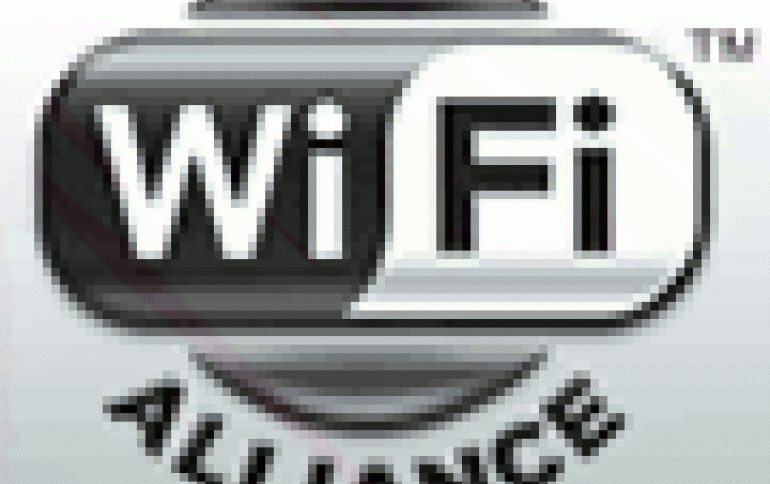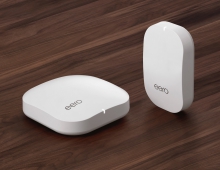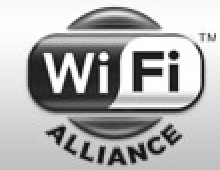
Wi-Fi Alliance To Take Over WiGig Development
The courtship between the Wi-Fi Alliance and the Wireless Gigabit Alliance is set to end in marriage.
The Wi-Fi Alliance and the Wireless
Gigabit (WiGig) Alliance have executed a Memorandum of
Understanding (MOU) outlining their plans to
consolidate activity in Wi-Fi Alliance.
The Wi-Fi Alliance says that the agreement builds on more than two years of collaboration between the organizations, in which WiGig Alliance developed the WiGig technology specifications including MAC-PHY and Protocol Adaptation Layers (PALs) and Wi-Fi Alliance initiated work to develop an interoperability certification for 60 GHz products.
WiGig can deliver up to 7Gbps of theoretical throughput, much more than even the 802.11ac flavor of Wi-Fi that is now coming out in many network and mobile devices. But because it operates over 60GHz spectrum, it is intended mostly for use within a room. Vendors are aiming the system initially at device-to-device functions such as wireless docking, synchronization and linking to displays.
"This is an exciting technology, and has been an important highlight of our certification roadmap for some time, so we are delighted to take this step," said Wi-Fi Alliance president and CEO Edgar Figueroa. "Combining the expertise of Wi-Fi Alliance and WiGig Alliance will deliver a terrific user experience with 60 GHz solutions, and will help ensure that a full range of interoperable WiGig solutions reaches the market as quickly as possible."
WiGig technology has continued to gain momentum, and will soon bring users closer to a future of wireless connectivity complementing the traditional Wi-Fi networking. WiGig offers short-range multi-gigabit connections for applications ranging from high-definition WiGig Display Extensions (WDE), to peripheral connectivity and I/O cable replacement such as WiGig Serial Extension (WSE), WiGig Bus Extension (WBE) and WiGig SDIO Extension (WDS). Early 60 GHz implementations based on the WiGig specifications are entering the market now and ABI Research forecasts that by 2016, annual shipments of devices with both Wi-Fi and WiGig technology will reach 1.8 billion.
"We set out four years ago with the simple goal of realizing a global wireless ecosystem of interoperable, high-performance devices that would operate seamlessly. In that time there have been many challenges to overcome but we have now created a market that simply did not previously exist. Consolidating activities with the Wi-Fi Alliance at this juncture will ensure WiGig's mainstream success to the benefit of technology users everywhere," said Dr Ali Sadri, President and Chairman of the WiGig Alliance.
"It's clear that 60 GHz technology is an important part of the future of wireless connectivity, and a significant complement to traditional Wi-Fi networking," said Peter Cooney, practice director for semiconductors at ABI Research. "With so many devices expected to incorporate both traditional Wi-Fi and WiGig, it just makes sense for activities to consolidate under the Wi-Fi Alliance organization."
The first Wi-Fi Alliance interoperability certification program for WiGig products is targeted to launch late this year.
Under the terms of the MOU, the organizations will enter a period of diligence and planning, with the intent to complete transition of both the technology development activity and WiGig assets to Wi-Fi Alliance by the middle of 2013.
The Wi-Fi Alliance says that the agreement builds on more than two years of collaboration between the organizations, in which WiGig Alliance developed the WiGig technology specifications including MAC-PHY and Protocol Adaptation Layers (PALs) and Wi-Fi Alliance initiated work to develop an interoperability certification for 60 GHz products.
WiGig can deliver up to 7Gbps of theoretical throughput, much more than even the 802.11ac flavor of Wi-Fi that is now coming out in many network and mobile devices. But because it operates over 60GHz spectrum, it is intended mostly for use within a room. Vendors are aiming the system initially at device-to-device functions such as wireless docking, synchronization and linking to displays.
"This is an exciting technology, and has been an important highlight of our certification roadmap for some time, so we are delighted to take this step," said Wi-Fi Alliance president and CEO Edgar Figueroa. "Combining the expertise of Wi-Fi Alliance and WiGig Alliance will deliver a terrific user experience with 60 GHz solutions, and will help ensure that a full range of interoperable WiGig solutions reaches the market as quickly as possible."
WiGig technology has continued to gain momentum, and will soon bring users closer to a future of wireless connectivity complementing the traditional Wi-Fi networking. WiGig offers short-range multi-gigabit connections for applications ranging from high-definition WiGig Display Extensions (WDE), to peripheral connectivity and I/O cable replacement such as WiGig Serial Extension (WSE), WiGig Bus Extension (WBE) and WiGig SDIO Extension (WDS). Early 60 GHz implementations based on the WiGig specifications are entering the market now and ABI Research forecasts that by 2016, annual shipments of devices with both Wi-Fi and WiGig technology will reach 1.8 billion.
"We set out four years ago with the simple goal of realizing a global wireless ecosystem of interoperable, high-performance devices that would operate seamlessly. In that time there have been many challenges to overcome but we have now created a market that simply did not previously exist. Consolidating activities with the Wi-Fi Alliance at this juncture will ensure WiGig's mainstream success to the benefit of technology users everywhere," said Dr Ali Sadri, President and Chairman of the WiGig Alliance.
"It's clear that 60 GHz technology is an important part of the future of wireless connectivity, and a significant complement to traditional Wi-Fi networking," said Peter Cooney, practice director for semiconductors at ABI Research. "With so many devices expected to incorporate both traditional Wi-Fi and WiGig, it just makes sense for activities to consolidate under the Wi-Fi Alliance organization."
The first Wi-Fi Alliance interoperability certification program for WiGig products is targeted to launch late this year.
Under the terms of the MOU, the organizations will enter a period of diligence and planning, with the intent to complete transition of both the technology development activity and WiGig assets to Wi-Fi Alliance by the middle of 2013.





















